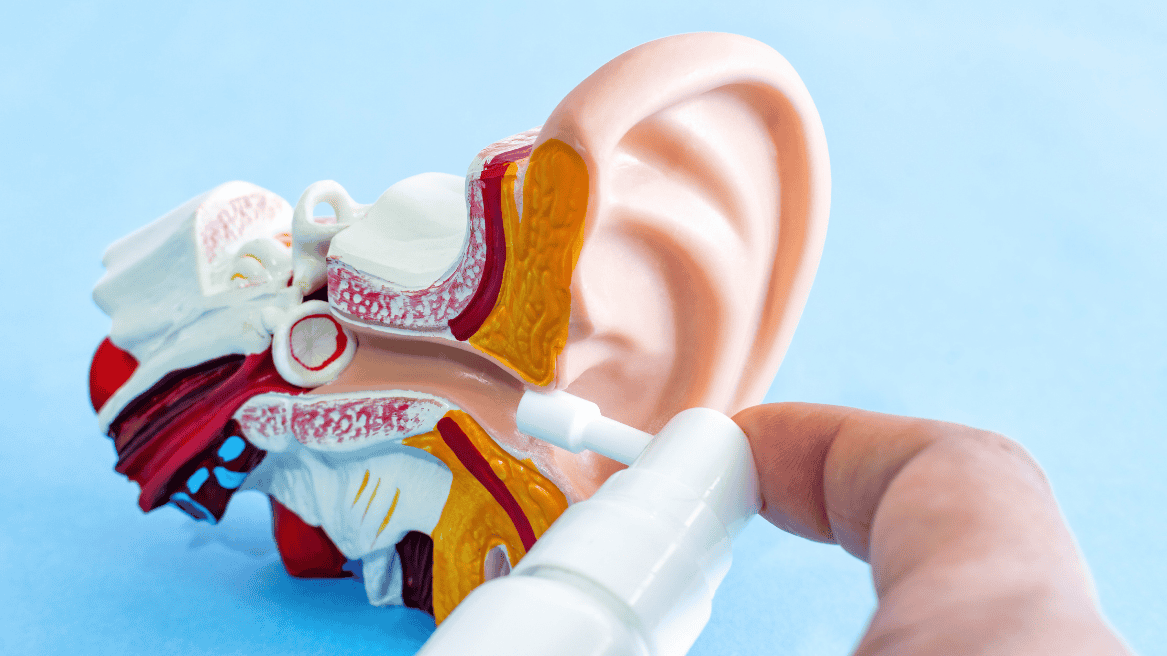Earwax is a natural protector of our ears – but when it builds up excessively, it can lead to discomfort, temporary hearing loss, or even infections. At Hodgson Pharmacy in Longfield, we often get asked: “How often can you have ear microsuction?” or “Why do I have so much earwax?” In this blog, we aim to answer these questions and more, offering tailored guidance on earwax management, especially for high-risk individuals like swimmers, hearing aid users, and allergy sufferers.
Situated in Longfield, just a short drive from Dartford and Gravesend, our experienced team provides safe, effective microsuction earwax removal and aftercare services.
Understanding Earwax and Its Role
Earwax (medically known as cerumen) is not a nuisance – it serves an important purpose:
- Traps dust and debris
- Prevents bacterial infections
- Keeps the ear canal lubricated
However, some people produce more earwax than others, and in certain cases, it becomes compacted or trapped, requiring removal through professional methods like microsuction.
Why Do I Have So Much Earwax?
This is a common concern. Some factors that contribute to excess earwax production include:
Genetics and Physiology
Some individuals have naturally narrow or curved ear canals, making it harder for wax to exit normally.
Use of Earbuds or Hearing Aids
These can push wax deeper into the canal, contributing to impaction.
Environmental Exposure
Swimmers and frequent water users tend to experience more wax due to moisture stimulating the glands.
Skin Conditions and Allergies
Eczema, psoriasis, or seasonal allergies can increase wax production.
If any of these apply to you, you may benefit from preventive earwax care every few months.
How Often Can You Have Ear Microsuction?
Microsuction is a gentle and safe method for removing earwax – and unlike syringing, it doesn’t use water, making it suitable for:
- Perforated eardrums
- Chronic infections
- Hearing aid users
- People with sensitive ears
General Recommendations:
- Every 6 to 12 months for most people
- Every 3 to 6 months, if you wear hearing aids
- Every 3 months, if you swim regularly or have eczema/allergies
- As needed if symptoms like muffled hearing, discomfort, or tinnitus occur
We offer personalised advice at Hodgson Pharmacy based on your lifestyle and ear health history.
What Happens During a Microsuction Appointment?
At Hodgson Pharmacy in Longfield, your visit includes:
- Initial ear examination
- Gentle suction of the wax using a microscope-guided tool
- Instant results – no discomfort, no water
- Post-care guidance
We also offer advice on aftercare drops, ear hygiene, and rebooking frequency, especially for those prone to recurring build-up.
Preventive Ear Wax Care: Tips You Should Follow
To avoid frequent blockages, consider these tips:
- Avoid cotton buds – they push wax deeper
- Use pharmacy-recommended olive oil drops every few weeks
- Keep your ears dry after swimming or showering
- Schedule regular checks if using hearing aids
- Don’t insert objects into your ear canal
Our pharmacists can recommend ear-friendly care products to use at home between visits.
Why Choose Hodgson Pharmacy in Longfield?
If you’re based in or around Dartford, Gravesend, or Longfield, Hodgson Pharmacy offers:
- Professional ear assessments
- Safe microsuction without syringing
- Aftercare support and guidance
- Fast appointments without a GP referral
We’re trusted by the local community for professional, friendly care — whether it’s your first wax removal or part of your regular health routine.
Book your appointment online now
Frequently Asked Questions
How do I know if I need ear cleaning?
If you are experiencing muffled hearing, itchiness, ringing in the ears (tinnitus), or ear pain, you likely need to get your ears checked.
Is it bad to have too much earwax?
Excess wax isn’t harmful unless it becomes impacted. Regular cleaning with microsuction can prevent complications.
Can I prevent earwax build-up?
Yes – regular use of olive oil drops and avoiding cotton buds can help manage wax production.
Is microsuction safe for children and older adults?
Absolutely. It’s a non-invasive and water-free method, ideal for all age groups.

